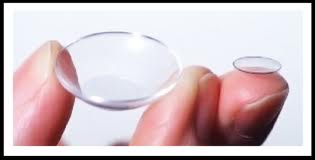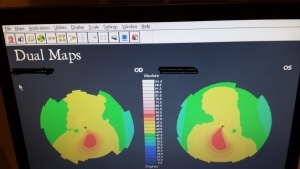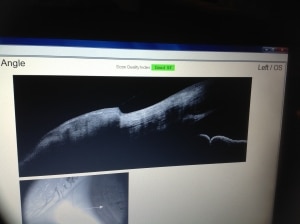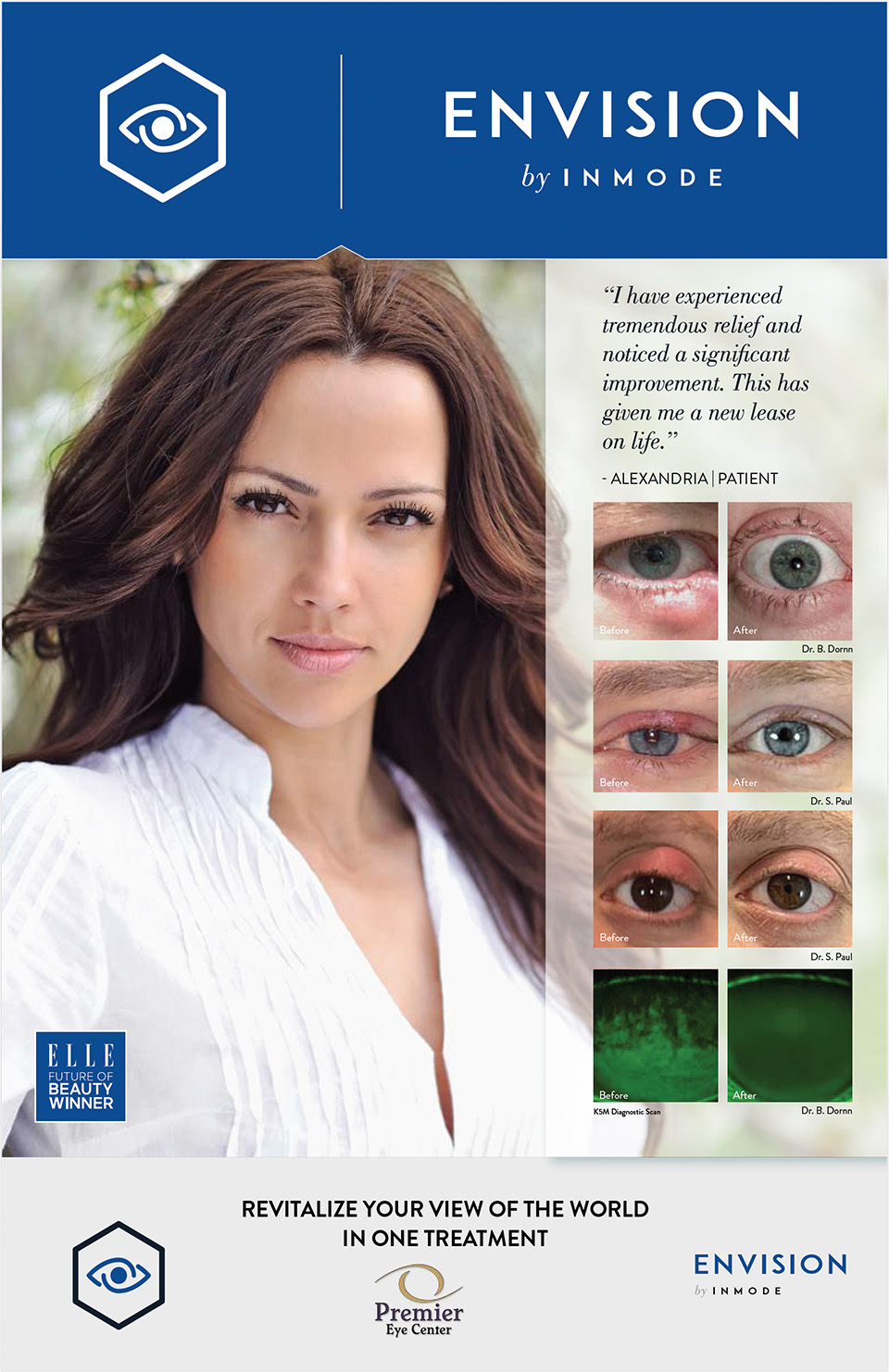“I can’t say thanks enough. Seeing that good out of my left eye yesterday after being blind in it for over 30 years is truly a blessing I don’t take lightly.” -patient in our office with an old cornea transplant successfully fit in scleral contact lenses.
Most folks think of contact lenses as a nice option when you don’t want to wear eyeglasses. However, there are also speciality contact lenses which function as medical devices to treat conditions and/or correct irregularities that negatively affect vision. Today we’ll talk about scleral contact lenses.

Scleral lens on left. Normal RGP on right.
A scleral contact lens gets its name from the fact that it is large enough to bridge the entire cornea and rest on the sclera (the strong and tough white part of the eye). This has two great benefits. First it covers any imperfection in the cornea. Cornea irregularities can make vision uncorrectable with glasses. These irregularities can be caused by diseases such as keratoconus and pellucid marginal degeneration or from past surgery such as LASIK or radial keratotomy aka “RK.”
The second benefit is that the lens holds a constant reservoir of sterile saline up against the delicate cornea. This prevents the cornea from drying out and is the reason we sometimes use the lens as a “shell” to protect and heal excessively dry corneas. Rather than the cornea being exposed to open air and drying out, it is bathed in sterile saline.
Because the lenses are used for more than simply correcting eye sight, they are often covered by medical insurance as a medically necessary device. Our insurance specialists will be happy to discuss your plan coverage with you.
The customization of these lenses is like nothing you’ve ever experienced before. A typical fitting consists of 3-4 visits ranging from 30 minutes-2 hours. Because the lens settles on the eye over time, the doctor will fit the lens on your eye and then let it settle before finalizing adjustments. The lens is analyzed using a medical microscope, corneal topographer and with our digital scanning laser. Adjustments are made in microns (one inch = 25,400 microns for reference).
Scleral lenses are made of rigid gas permeable, “GP” or “RGP” materials. Today’s materials allow oxygen to be transmitted through the lenses at a rate high enough to maintain proper ocular health. Higher even than many soft contact lenses.
The most difficult part of wearing a scleral lens is learning how to insert the lens because it is so large. However, once it is in comfort is terrific. Many patients can wear their lenses all day; even in our dry high altitude Prescott air.
Scleral lenses have allowed us to save the career of a Dentist in her 40s. She brought in disability papers for our doctors to sign because she could not see clearly enough to work. He was able to get her seeing better than she has in over a decade and is back to providing high quality care.
We have helped multiple patients avoid corneal transplants because they can see so well and are comfortable in their lenses. Call us today to schedule a consultation.
Here’s a quick video showing how to insert, remove and care for lenses:
“….he highly praised your skill and kept asking for your name.” -patient describing their conversation with surgeon in California after being successfully fit with scleral contact lenses in our office




